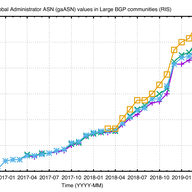
BGP Large Communities Uptake - An Update
• 4 min read
We were asked by the community to look at the uptake of BGP Large Communities as observed by our Routing Information Service (RIS).

Based in Amsterdam, NL
Articles
Likes on articles
I'm a data scientist at the RIPE NCC. I'm a chemist by training, but have been working since 1998 on Internet related things, as a sysadmin, security consultant, web developer and researcher. I am interested in technology changes (like IPv6 deployment), Internet measurement, data analysis, data visualisation, sustainability and security. I'd like to bring research and operations closer together, ie. do research that is operationally relevant. When I'm not working I like to make music (electric guitar, bass and drums), do sports (swimming, (inline) skating, bouldering, soccer), and try to be a good parent.
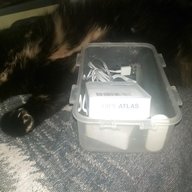
• 8 min read
This article is intended to make RIPE Atlas users aware of ethical issues that could arise when using RIPE Atlas. We do not intend to propose any new formal processes or procedures to address the relevant ethical issues, but we do want to encourage members of the RIPE Atlas community to consider th…
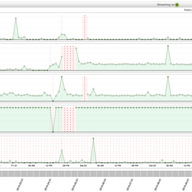
• 6 min read
We used a number of RIPE NCC tools and data sets to take a quick look at the recent DDoS attack on Dyn’s infrastructure. We wanted to see if this could be found in the data produced by the RIPE Atlas community.

• 11 min read
The issue of the relative sizes of the IPv4 and IPv6 Internet in BGP came up during discussion at the APNIC/APRICOT meeting held in Auckland, New Zealand earlier this year.
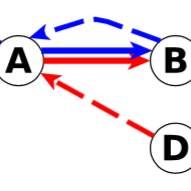
• 8 min read
Detecting network disruptions is a recurring problem. Clearly locating performance degradation is an important step in debugging and subsequently fixing connectivity issues.
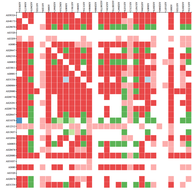
• 4 min read
The IXP country jedi tool described in earlier RIPE Labs articles, can also be used to analyse the situation in a specific city. This time we look at Berlin.
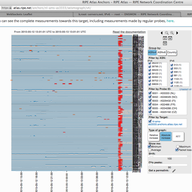
• 3 min read
During the RIPE 70 Meeting in Amsterdam this week (on 13 May around 10:00 UTC), we experienced a network outage at AMS-IX. Let's see how this was monitored by various tools.

• 9 min read
In 2013 and 2014 we looked into measuring Interdomain Routing in Africa using the RIPE Atlas infrastructure. This resulted in a paper published at the PAM (Passive and Active Measurement) 2015 conference. Here we present some highlights of this research.
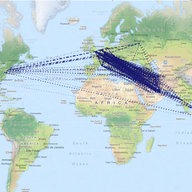
• 9 min read
With the MENOG 15 meeting taking place this week, we look at Internet measurements and statistics for countries in the MENOG region.
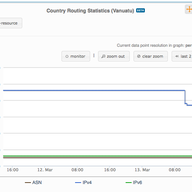
• 3 min read
While the cyclone Pam is battering the South Pacific, we're monitoring how this affects Vanuatu.
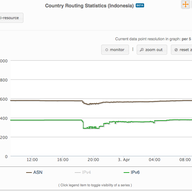
• 5 min read
In this article we are looking in some more detail at BGP leak in Indonesia and illustrate how RIPEstat visualisations can help to assess the impact.
“Thank you for this, Emil and Alun! From looking at the map you provided, it would be great to see an additional anchor in Katthammarsvik. Do you think it's worth trying to add one there?”
Thanks for the suggestion. I think that depends on the physical (cables) and logical (routing) topology near Katthammarsvik in relation to the cable landing there. In a quick search I didn't find datacentres there, which makes me think it would not be too useful. Experts on the local Internet infrastructure would probably be able to answer if it would make sense or not.
This RIPE Labs article has good information on how to avoid effects from unknown attributes showing up at your BGP routers: https://labs.ripe.net/author/berislav_todorovic/bgp-path-attribute-filtering-a-powerful-tool-to-mitigate-alien-attributes/
“Hi Emile, I remember attribute 28 showing up in several previous studies. Interesting to see it causing a problem this time! As bgpdump maintainer, I'd ask you to check out v1.6.2 or higher, since 2020 there is a '-u' flag to output unknown attributes in the short (-m) mode (helpfully submitted by Italo Cunha) - it may make your future parsing life much easier :) Kind regards, Colin”
Thanks Colin, I didn't know, and this would have speeded up my analysis if I had!
Code for looking into AS Adjacency changes is available here: https://github.com/emileaben/as-neighbour-diff
Code on how to create graphs like Figure 1 ( ie. BGP view of how networks in a country interconnect ) is available here: https://github.com/InternetHealthReport/country-as-hegemony-viz
NOG Alliance is helping out network operators in Ukraine: https://nogalliance.org/our-task-forces/keep-ukraine-connected/
An effort related to keeping Urkanian servers/websites online by the Dutch Cloud Community: https://dutchcloudcommunity.nl/community/cloud4ukraine/
We got a request for the HHI scores for other countries. I've put these in a small repo on github together with the code that generated this. repo: https://github.com/emileaben/hhi-eyeballs HHI scores for 2022-03-07 are available here: https://raw.githubusercontent.com/emileaben/hhi-eyeballs/main/eyeball-hhi.2022-03-07.csv
“This is awesome work, thank you! Do you maybe have the script/notebooks/sources to reproduce this? This could be potential used for other countries.”
Hi Jenneth, The observable notebook we used for this is here: https://observablehq.com/@aguformoso/internet-outages-as-seen-by-ripe-atlas . It's a little rough around the edges, so it would be great if you could help improve it!
Thanks for your comment Maxime. I would love to see more analysis too, and the tool allows people to do this. Take for instance this thread on Twitter where Jason Livingood analyses the signals for the US: https://twitter.com/jlivingood/status/1245142990336688130 If others have analysis for specific countries they want to share it would be great to have them collected, for instance as comments to this RIPE Labs post!
Showing 18 comment(s)